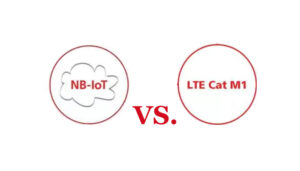What is the difference between ZigBee and WiFi? After the read of ZigBee vs Wifi Technology, you can learn about it.
Introduction of Zigbee in ZigBee vs Wifi technology

What is ZigBee in ZigBee vs Wifi?
ZigBee technology is a wireless online protocol that is low-speed short-range transmission, and the underlying is a media access layer and the physical layer using IEEE 802.15.4 standard specification.
The main features include low speed, low power, low cost, support of a large number of online nodes, support of multiple online topologies, low complexity, fast, reliability, and safe.
Zigbee is also known as “HomeRF Lite”, “RF-Easylink” or “Firefly” radio technology, and is now unified as ZigBee technology.
ZigBee is a wireless digital transmission network platform consisting of more than 65,000 wireless digital modules, a CDMA network, or a GSM network similar to existing mobile communications.
Each ZigBee network digital module is similar to a base station of mobile networks, and within the entire network, they can communicate with each other;
Different, the ZigBee network is mainly established for automated control data transmission, and the mobile communication network is mainly established for voice communication;
Each mobile base station is generally more than 10,000 yuan, while each Zigbee base station is less than 1,000 yuan; each ZigBee network node is not only available to the object, such as the sensor connection but also directly data acquisition and monitoring, you can also automatically transfer data from other network nodes;
In addition, each ZigBee Network Node (FFD) can also be included in the range of its own signal coverage, and multiple sub-nodes (RFDs) wireless connections that do not assume network information transfer tasks.
Each ZigBee network node (FFD and RFD) can support up to 31 sensors and controlled devices, each of which can have eight different interface modes. Digital and simulation can be collected and transmitted.
Characteristics of ZigBee technology in ZigBee vs Wifi
ZigBee technology is a close range, low complexity, low power consumption, low rate, low cost two-way wireless communication technology.
It is mainly used to perform data transmission between a short distance, low power consumption, and low power consumption, and typical data, intermittent data, and low-reaction time data transmission.
ZigBee technology provides a low-rate wireless communication technology for low complexity, cost, and power consumption using low-cost, portable, or mobile devices. This wireless communication technology has the following characteristics:
Low power consumption:
In the case of the working mode, the ZigBee technology is low, and the amount of transmission data is small. Therefore, the transmission and reception time of the signal is short, followed by the ZigBee node in sleep mode.
The device search time is generally 30ms, and the sleep activation is delayed to 15ms, and the activity equipment channel access is delayed to 15 ms. Due to the short working time, the transmission and reception information is low and the sleep mode is used so that the ZigBee node is very power-saving, the ZigBee node’s battery operating time can be around 6 months to 2 years.
For typical applications, alkaline batteries can be used for several years, for some working hours and total time (working time + sleep time), the battery life can even exceed 10 years.
Data transfer is reliable of ZigBee technology in ZigBee vs Wifi
ZigBee’s Media Access Control Layer (MAC layer) uses the Talk-When-Ready collision mechanism.
Under this fully confirmed data transmission mechanism, when there is a data transfer demand, it is immediately transmitted, and each packet transmitted must wait for the recipient’s confirmation information and confirm the information reply.
If the reply without confirming the information indicates that a collision will be changed, it will be once again, and this method can improve the reliability of system information transmission.
At the same time, for the communication service that requires a fixed bandwidth, the dedicated time slot is avoided, avoiding competition and conflicts when sending data. At the same time, ZigBee has been optimized for time-delayed applications, and the time extension of communication and sleep state activation is very short.
The large network capacity of ZigBee technology in ZigBee vs Wifi
The characteristics of ZigBee’s low rate, low power, and short-distance transmission make it very suitable for simple devices.
ZigBee defines two devices, full-featured devices (FFDs), and simplified functional devices (RFD).
For full-featured devices, it requires all 49 basic parameters. Simplified functional devices, only require it to support 38 basic parameters during minimal configuration.
A full-featured device can call with simplified functional devices and other full-featured devices and can work in three ways: a domain network coordinator, a coordinator, or a device, respectively.
Simplified functional devices can only call full-featured devices, only for very simple applications.
A ZigBee network has a maximum of 255 ZigBee network nodes, one of which is the master device, and the rest is a slave device.
If the entire network can support up to 64,000 ZigBee network nodes through the Network Coordinator, the entire network can be connected to each other, and the number of the entire ZigBee network node will be considerable.
Compatibility of ZigBee technology in ZigBee vs Wifi
ZigBee technology is seamlessly integrated with existing control network standards. The network is automatically established through the Network Coordinator, and the channel access is performed by carrier listening/conflict detection (CSMA-CA). In order to be reliable, a full-screen handicapped protocol is also provided.
Safety of ZigBee technology in ZigBee vs Wifi
ZigBee provides data integrity check and authentication features, providing three-level security in data transfer.
The first level is actually unsafe, for some applications, if security is not important or sufficient security protection, the device can select this mode to transfer data.
For the second level of security level, the device can use the Access Control List (ACL) to prevent illegal devices from obtaining data at this stage without adoption.
The third level security level uses an asymmetric password that belongs to the Advanced Encryption Standard (AES) in data transfer. AES can be used to protect data payloads and prevent attackers from pretending legitimate devices, each application can flexibly determine its security properties.
Real low costs of ZigBee technology in ZigBee vs Wifi
The initial cost of the module is estimated to be around $ 6, and it will be reduced to $ 1.5-2.5, and the ZigBee protocol is free of the patent. At present, the price of low-power UWB chipsets is at least $ 20. The price goal of ZigBee is only a few cents. Low cost is also a key factor for Zigbee.
Demand short of ZigBee technology in ZigBee vs Wifi
Communication delay and delay from sleep state are very short, typical search equipment delay is 30ms, sleep activation is 15ms, and the delay of the activity equipment channel access is 15ms. ZigBee technology is applicable to wireless controls such as industrial control, such as industrial control situations, etc.
Zigbee protocol framework in ZigBee vs Wifi technology
ZigBee is a technical standard for networking, security, and application software based on 802.15.4 wireless standards approved by IEEE approved.
Unlike other wireless standards, such as 802.11 or 802.16, ZigBee and 802.15.4 carry limited data traffic at a maximum transfer rate of 250 kbps.
ZigBee V1.0 version of the network standard Contains the light control device has been introduced at the end of 2004, and the description of other applications and related equipment will also be released in subsequent times.
In terms of standard specification, mainly IEEE 802.15.4 teams and ZigBee alliance two organizations, both of which have been developed hardware and software standards, and the role division of the two is like the relationship between the IEEE 802.11 group and Wi-Fi.
ZigBee is established above 802.15.4, which determines the application of applications that can be shared between different manufacturers. 802.15.4 Only the physical layer and the media access layer are defined, not enough to ensure that different devices can be dialogue, so there is a ZigBee alliance.
The ZigBee-compatible product works on the PHY of IEEE802.15.4, and its band is free, 2.4 GHz (global), 915MHz (US), and 868MHz (Europe).
Products using ZigBee technology can provide 250kbit / s (16 channels) on 2.4GHz, providing 40kbit / s (10 channels), and transport rates of 20kbit / s (1 channel) on 868MHz.
The transmission range depends on the output power and the channel environment, between 10m to 100m, generally 30m or so. Since ZigBee uses an open band, there is a variety of wireless communication technology.
To avoid interference, each frequency band uses direct sequence spread spectrum technology. At the same time, PHY’s direct sequence spread spectrum technology allows the device to be synchronized without a closed loop.
In these three different frequency bands, phase modulation techniques are used, 2.4GHz uses higher-order QPSK modulation techniques to reach 250kbit / s rates and reduce working hours to reduce power consumption.
In 915 MHz and 868 MHz, BPSK modulation technology is used.
Compared with the 2.4GHz band, the 900MHz band is a low-frequency band, the loss of wireless propagation is small, the transmission distance is longer, and the frequency band is mainly the frequency band used by the indoor cordless telephone, and now it is more than 2.4GHz, interference few.
On the MAC layer, the CSMA / CA mode of the 802.11 series of standards in WLAN is mainly used to improve system compatibility. The so-called CSMA / CA will check if the channel has data transmission before transmission. If the channel has no data transmission, Start data transmission, if a collision is generated, then retransmit later.
In terms of network layers, the ZigBee Alliance develops astrology and mesh topologies, also allowing the combination of the two, called clustered trees. Depending on the different roles of the node, it can be divided into full-featured devices (FFD) and Reduced-Function Devices; RFD.
Compared to FFD, the circuit of the RFD is relatively simple and the storage capacity is small. FFD’s node has the function of controlling and providing data exchange, while RFD can only transfer data to FFD or receive data from FFD.
The ZigBee protocol suite is compact and simple. The specific hardware demand is very low, and the 8-bit microprocessor 80C51 can meet the requirements. The full-featured protocol software requires a 32k-byte ROM, and the minimum function protocol software requires approximately 4k bytes of ROM.
WiFi technology in ZigBee vs Wifi

What is WiFi in ZigBee vs Wifi technology?
Wi-Fi, the full name of Wireless Fidelity. ie, wireless Fidel technology. It is a technology such as a personal computer, a handheld device, such as a PDA, a mobile phone.
Wi-Fi is a brand of wireless network communication technology, which is held by Wi-Fi Alliance and is the purpose of improving interoperability between wireless network products based on IEEE 802.11 standard.
The scope of wireless local area network refers to wireless compatibility certification, essentially a business certification, and is also a technology for wireless networking.
International WiFi in ZigBee vs Wifi Transport Agreement Standard
Currently, the WLAN field is mainly two standards and Hiperlan / X (European Wireless LAN) series, as well as WAPI standards developed in my country.
802.11 is an industrial standard for IEEE in wireless network communication defined by wireless LAN (Wireless LAN) in 1997. Since then, this standard is constantly supplemented and improved, forming a standard series of 802.11x.
802.11x standard is the mainstream standard of infinite local area networks and is also the technical foundation of Wi-Fi.
WiFi's technical characteristics in ZigBee vs Wifi technology
WiFi advantages in ZigBee vs Wifi technology
(1) The wireless wave coverage is wide, and the WiFi radius is 100 meters, suitable for unit floor and internal applications. The Bluetooth technology is only within 15 meters.
(2) Speed is not only fast, but also high reliability
802.11b wireless network specification is the IEEE 802.11 network specification variant. The highest bandwidth is 11Mbps. Under the circumstances of signals or relatively weak, bandwidth can be adjusted to 1 Mbps, 5.5Mbps, and 2Mbps, bandwidth automatic adjustment, effectively guarantee network reliability and stability.
(3) No need for wiring
The advantage of WiFi is mainly without the need for wiring and can be limited by the wiring conditions. So it is very suitable for mobile office users and has a broad market prospect. Today, WiFi has expanded from inventory control, traditional healthcare and management services, etc., and has even begun to enter educational institutions and families.
(5) Health and safety
The transmit power set by IEEE 802.11 cannot exceed 100 mW, and the actual transmit power is about 60 to 70 mW. The transmit power of the mobile phone is about 200 million to 1 tile. The hand-held walkie-talkie is up to 5 watts, and the way the wireless network is used is not directly in contact with the human body like a mobile phone. It has certain safety.
Wifi deficiencies in ZigBee vs Wifi technology
The IP wireless network is now used, and there are some shortcomings, such as long switching time, small coverage radius, non-high bandwidth, so that it does not support mobile VoIP and other requirements.
Because the wireless network system is not open to upper business development, many applications that are suitable IP mobile environments are difficult to develop. WLAN products positioned in-home users, in many places, do not meet the carrier’s network maintenance, operational requirements.
WiFi's safety in ZigBee vs Wifi technology
WiFi provides a large number of applications, network security is a question worthy of our concern.
On the one hand, WiFi gives us a lot of ways to access the Internet. Let us have unlimited resources of the Internet;
On the other hand, WiFi also gives us a lot of security issues, and all kinds of online hacks, viruses, attacks, etc., there are possibilities that threaten our online transactions at any time.
WIFI has security hazards in ZigBee vs Wifi technology
WiFi’s safety hazard comes from two aspects: one aspect is from the network attack. On the other hand, from the trap of the network, wifi’s safety hazard is mainly:
(1) Malicious fishing AP;
(2) Access attack;
(3) DOS and DDoS attacks.
WIFI safety mechanism in ZigBee vs Wifi technology
WiFi has a lot of security issues, but it does not affect our favorite WiFi and solves the Internet security problem through a series of safety mechanisms. It mainly includes network encryption and access control.
That is, network encryption is only the correct recipient that can decrypt can understand the data content. The access control only accesses network data through WiFi-authorized users.
(1) WPA technology is the use of wireless network-based use protocols, and WPA provides data protection to users through authorized ways to provide data protection, there is no data that cannot be accessed by authorized users.
(2) Encryption technology, the use of encryption on today’s network is mainly AES and TKIP mode.
(3) Authentication technology, WiFi Internet security certification ensures that users access data security, its main certification is Web authentication, wireless access authentication, and PPPoE authentication.
WiFi technology application in ZigBee vs Wifi
Wireless Internet application in ZigBee vs Wifi
Because WiFi’s frequency band does not require any telecommunications operation license for free, for this purpose, WLAN wireless devices provide worldwide. The cost is not only low, and the data bandwidth wireless interface.
Users can quickly browse the web within WiFi coverage and answer anytime, anywhere, call.
Other WLAN-based broadband data use, for example, online games, streaming media, etc. It is worthy of user expectations.
Since the emergence of WiFi features, we browse the web, music download, call long-distance calls, digital photos, and send and receive emails, so we don’t have to worry about problems that spend high and slow speeds.
Pocket Equipment WiFi Application in ZigBee vs Wifi
WiFi applications on handheld equipment are wider and wider, and the smartphone is one of them. Unlike Bluetooth technology applied to mobile phones, WiFi has higher transmission rates and greater coverage, WiFi mobile phone has become a fashion trend in today’s mobile communications.
Users can quickly browse the web, not only within the WiFi coverage area but answer and call the phone anytime, anywhere. Other parts based on WLAN-based broadband data, such as online games, streaming media, etc., are more worthy of users’ expectations.
There is now a WiFi interface for many people in many cities in many cities in the world.
When we participate in various conferences, gatherings, and travel, they can use handheld equipment to surf online. With the 3G 4G era, more and more telecom operators also diverted WiFi technology, and the 3G 4G coverage large bandwidth is low, and WiFi covers small bandwidth. Both technologies have advantages and disadvantages of each other.
WiFi technology is wireless, high-speed, and low cost is very suitable for the use of the 3G 4G era. In terms of mobile phone 3G 4G business, it is now necessary to support WiFi smartphones to easily browse the Internet through the AP.
With the development of VoIP software, VoIP software represented by Skype has supported a variety of operating systems. After loading the corresponding VoIP software on a smartphone with WiFi modules, voice calls can be implemented via WiFi network technology.
Development trend and prospects of WiFi in ZigBee vs Wifi
WiFi is the mainstream standard for wireless access, but how far wifi is going? At present, WiFi has a successor – Wimax. WiFi is compatible with WiMAX, and its standard is 802.16x. WiMAX has a wider frequency band selection, higher access speed, and further transmission distance, and more.
But WiMAX is still partially distinguished from WiFi, and both standards are different, they are not in the same category. WiMAX is mainly used for wireless metropolitan area networks. WiFi is mainly used for wireless local area networks.
There is a relationship between complementary competition between the two, there is no alternative relationship. WiFi is more suitable for use in urban indoors, while WiMAX is more suitable for urban outdoor use.
WiFi can play an important supplement in 3G within a specific range and region. It is undeniable that commercial WiFi technology encounters some problems that need to be solved.
On the one hand, it is a self-limiting of WiFi technology, such as security, how to bill, and roam. On the other hand, it is because WiFi’s profit model is unclear. If WiFi is operated as a single network, the shortcomings of commercial users will make the investment income of network construction. It also affected the enthusiasm of telecom operators. However, from WiFi technology positioning, WiFi technology is still a good supplement to the mobile cellular network.
With all the features themselves, WiFi has expanded to the Internet of Things, medical and other fields, and people’s lives will change due to WiFi.
ZigBee vs WiFi, the comparison and advantages
ZigBee vs WiFi Hardware memory demand comparison:
ZigBee: 32 ~ 64kb +; WiFi: 1MB +; ZigBee hardware demand is low.
ZigBee vs WiFi Battery power supply control:
ZigBee: 100 ~ 1000 days; WiFi: 1 ~ 5 days; ZigBee power consumption.
ZigBee vs WiFi Transmission distance comparison (general usage, no high power antenna emission device):
ZigBee: 1 ~ 1000m; WiFi: 1 ~ 100m; ZigBee transmission distance long.
ZigBee disadvantage:
ZigBee vs WiFi Network bandwidth comparison:
ZigBee: 20 ~ 250kb/s; wifi: 11000kb/s;
ZigBee is low and the transmission is slow.
ZigBee and WiFi same points:
- The two are short-distance wireless communication technologies;
- All use 2.4GHz band
- Both DSSS technology;
ZigBee vs WiFi difference:
ZigBee vs WiFi, the transmission speed is different.
ZigBee’s transmission speed is not high (<250kbps), but the power consumption is very low, using battery power supply can generally be used for more than 3 months;
WiFi is often said, to the radio LAN, the rate is large (11Mbps), the power consumption is also large, generally external power supply;
ZigBee vs WiFi, applications are different.
ZigBee is used for low-rate, low-power applications, such as wireless sensor networks, suitable for industrial control, environmental monitoring, smart home control, etc.
WiFi is generally wireless network technology for covering a certain range (such as 1 building) (about 100 meters of coverage). The form of expression is our commonly used wireless router. In a building, there is a wireless router, and the laptop (with a wireless network card) is basically wireless online.
ZigBee vs WiFi, the current situation is different.
As an emerging technology, ZigBee has been in high-speed development and promotion since the standard of the first version in 2004; there is no large-scale promotion due to cost and reliability;
WiFi, a lot of technology, and there are many applications.
Overall, ZigBee vs WiFi technology, the difference between the two is large, the market positioning is different, and the competition between each other is not very big. However, both are technically common, and the mutual interference between the two is relatively large, especially WiFi interference from ZigBee.
Besides the ZigBee vs Wifi Technology article, you may also be interested in the below articles.
PCB Antenna VS. External Antenna
Ceramic Antenna VS. PCB Antenna, A Comparison Guide
Wifi vs. 5G, is 5G better than Wifi?
Mobile Networks’ Evolution From 1G To 5G




